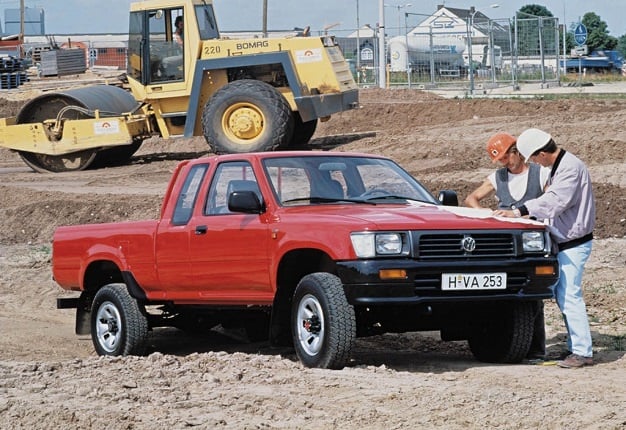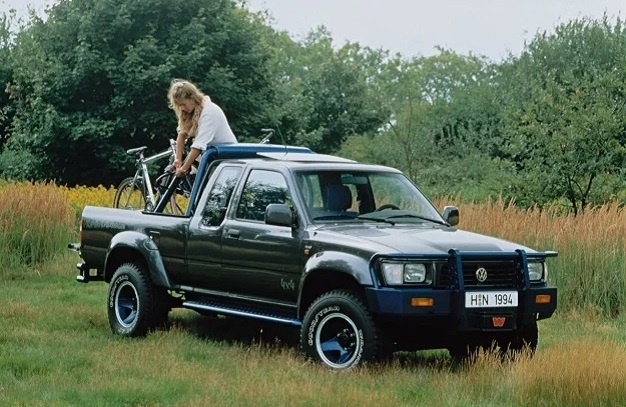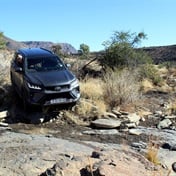
In the history of Hilux, there was only one product application which failed.
The joint venture with VW. If you are a South African VW bakkie fan, you’ll remember the few load box products from Wolfsburg before Amarok. There were the T-series Kombi-based double-cabs and the front-wheel-drive Caddy compact bakkie.
Both were notable utility vehicles, but decidedly niche vehicles.Yet there was an even rarer VW bakkie, which South Africa never received – the Taro. And yes: if you think that it looks like a Hilux with a VW roundel on the grille, you’d be correct.
In a very curious instance of 1980s automotive product and production cooperation, VW and Toyota signed an agreement that would allow the German brand to build and market Hilux bakkies in Europe under its nameplate.
VW estimated that there was a profit opportunity in a pre-unified Germany (and pre-common market EU), for a robust bakkie workhorse. The issue was that it simply did not have the resources to develop its bakkie line-up.
While VW was exploring the possibility of a 1ton bakkie, Toyota was keen on expanding its utility product presence in Europe and assessed that partnering with an established German nameplate would be the best way to achieve this. And so, the Taro was born.
The agreement stipulated that VW would build the fifth-generation Hilux at its commercial vehicle facility in Hanover, and be allowed to add a different grille, badge and name.
You’d imagine that Toyota Hilux mechanicals and VW brand cache would produce a terrifically successful bakkie but this was not the case.
Image: SuppliedThe Taro launched in 1989 and sold through until 1997 but with very limited success. European buyers simply could not fathom the use of a bakkie, especially the later extended-cab Taros. Europe’s antiquated city streets were too narrow for a bakkie with a large turning circle and its consistently rainy weather meant that an open load box was undesirable to move goods and tools.Panel vans were preferred as utility vehicles to bakkies and Taro, therefore, had very limited appeal. VW did attempt a lifestyle Taro of sorts, towards the end of the bakkie's lifecycle – from 1994-1997.
This extended-cab Taro 4x4 was upgraded with a stout off-road bumper, bush bar, roll bar, tubed rear step-up bumper and deep-dish wheels. Volkswagen even added elaborate fender flares.
Image: Supplied
It looked fantastic, but even this lifestyle specification Taro did not convince buyers. With the immense success of VW as a premium brand and Hilux’s legendary reputation as a bakkie which dominates in nearly every market it is present, you’d never imagine that a VW Hilux would fail. But in the case of Taro, this is exactly what happened.
By the time Toyota was preparing to launch its sixth-generation Hilux in the late 1990s, there was simply no business case left to continue its relationship with VW. Sales of the Taro had been too disappointing, and VW was focussing resources on revitalising its passenger car division, with the Golf4.




 Publications
Publications
 Partners
Partners

















